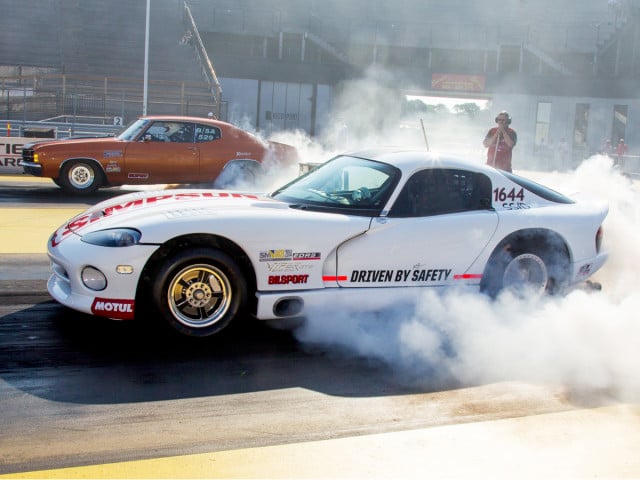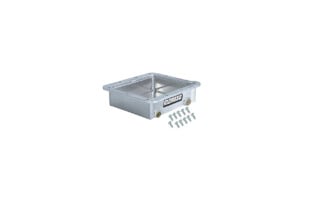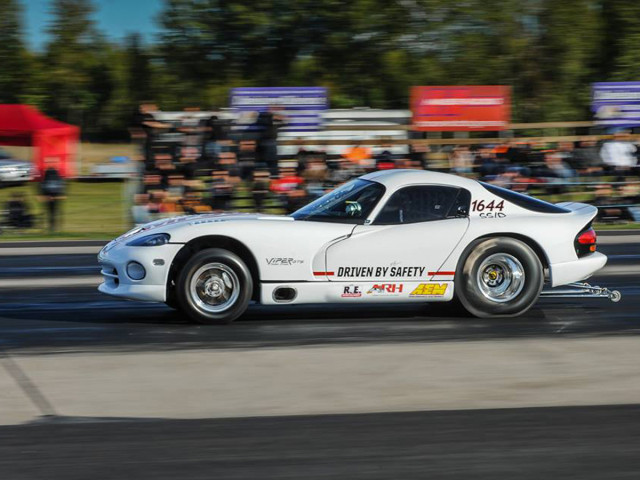 When you hear mention of Super Stock, the long-running NHRA class, you’d most likely envision ’68 Camaros, late-model fuel injected F-Bodies, and the heralded Hemi-powered SS/AH Barracudas. What you’re less likely to picture is the Barracuda’s younger, sexier cousin, the Dodge Viper. By our count, the one in this article brings the grand total of Super Stock Vipers to…one.
When you hear mention of Super Stock, the long-running NHRA class, you’d most likely envision ’68 Camaros, late-model fuel injected F-Bodies, and the heralded Hemi-powered SS/AH Barracudas. What you’re less likely to picture is the Barracuda’s younger, sexier cousin, the Dodge Viper. By our count, the one in this article brings the grand total of Super Stock Vipers to…one.
Jan Phersson, head of Simpson Safety Equipment’s European division, fell in love with Stock and Super Stock racing back in the early 90’s. “I found it so interesting, so I decided to sponsor the Swedish/Scandinavian Stock & Super Stock Series for a couple of years.” says Phersson. Suddenly finding his daily-driven 1995 Viper a bit boring, Phersson took it off the street and, with some pretty heavy modifications, had it running competitively in Super Street (10.90 index).
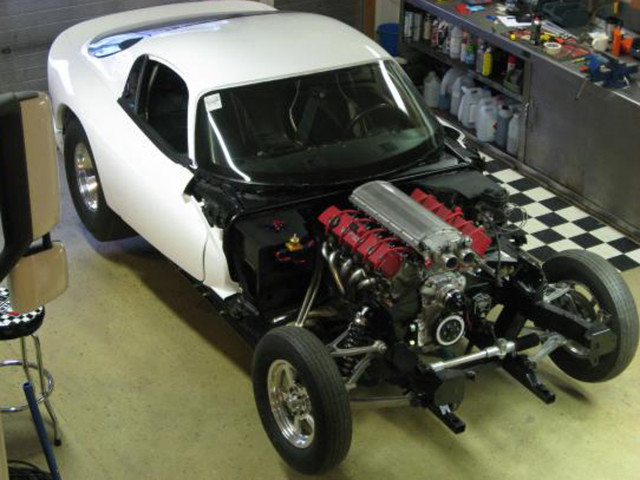 However, he was drawn further in by the allure of the ultra-competitive world of Super Stock and decided to launch an assault on the class with another Viper — this one a ’99 GTS purchased from a Microsoft executive who’d beaten on the car at various track days in the Seattle area.
However, he was drawn further in by the allure of the ultra-competitive world of Super Stock and decided to launch an assault on the class with another Viper — this one a ’99 GTS purchased from a Microsoft executive who’d beaten on the car at various track days in the Seattle area.
Phersson had the Viper shipped to Phil Mandella Race Cars in Upland, California, where it was promptly dismantled for phase one of the Super Stock modifications to begin. While there are already limits on modifications outlined by the stringent NHRA rules for the class, the Viper proved to be even more restrictive based on its low-slung, cramped chassis (the car has stock compression, stock intake/exhaust valve size, stock throttle bodies, stock crank, stock oil system, and weighs 3,500 lbs.). Mandella remedied much of that problem by installing an innovative Three-Link style suspension to help keep the rear end firmly planted. The car was then packed up and shipped to Phersson in Sweden for assembly, though the engine would be (much) later to arrive.
Upon the Snake’s arrival in Sweden, it received a Ford 9-inch rear end stuffed with Mark Williams Pro Stock components, bolted to the chassis via Koni shocks. While awaiting the arrival of the powerplant, Jan mocked up a Jericho DR4 transmission with a Youngblood clutch, but as time went on and the rules in Super Stock evolved, the Jerico was scrapped in favor of a clutchless Liberty Equalizer five-speed unit and a Leanders twin-disc clutch unit.
The power for the Viper would be a labor of love, with a full seven years in getting it to make the power needed to be competitive while utilizing legal specs and components, a task made all the more difficult by lack of knowledge of the Dodge 10-cylinder powerplant in relation to the Super Stock ruleset. “The build of the engine was a big challenge,” quips Jan. “It took several months just to get the heads to flow decent Super Stock “Small Block” [flow] numbers.”
The engine builder, Exotic Engine Development ran into a number of challenges on the extended build, as ever-shifting rules and priority-juggling as well as research and development needed to make power within the rules added to the timeframe added to the project. With the power for the Viper finally at levels needed to make a competitive run in the car, the 502 cubic inch engine was dropped in the frame rails and the team headed to the dyno for tuning, where they ran into a new batch of problems.
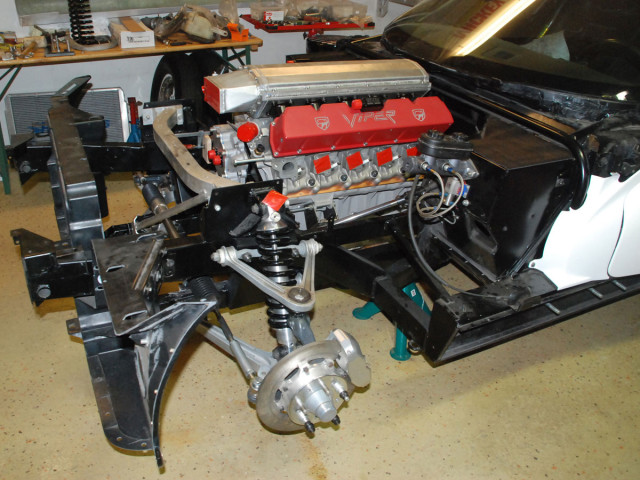 “Before we even took the car to the track, we spent days on the chassis dyno to figure out engine physics and make sure everything was OK. Among many things we found out was that the intake was designed for great top end power but no low end at all,” Phersson explains. He notes that, like an F1-style engine, the Viper has fuel injectors mounted in the intake, pointed directly down the plenum. Great, right? Well, not exactly. “The difference is that an F1 engine has a throttle body for each runner, and on the Super Stocker we’re forced to use only two small stock throttle bodies at the front end of the plenum.”
“Before we even took the car to the track, we spent days on the chassis dyno to figure out engine physics and make sure everything was OK. Among many things we found out was that the intake was designed for great top end power but no low end at all,” Phersson explains. He notes that, like an F1-style engine, the Viper has fuel injectors mounted in the intake, pointed directly down the plenum. Great, right? Well, not exactly. “The difference is that an F1 engine has a throttle body for each runner, and on the Super Stocker we’re forced to use only two small stock throttle bodies at the front end of the plenum.”
As you can imagine, that caused some major distribution issues. To remedy the issue, and allow the car to be driveable at less-than-WOT, Jan used the AEM controller to lean out the rear cylinders to match the reduced airflow at the rear of the intake at lower engine speeds. “When you open those two tiny stock throttle bodies, it instantly gets the correct mixture and fires all 10 cylinders!”
Because racers in Sweden get so few runs each season, Phersson and his team log all of their data using a Racepak system, and pair it with footage from a car-mounted GoPro camera to analyze their runs with to better understand any adjustments to driver or chassis behavior that are needed.
“It hasn’t been a straight forward build, and we had very few people to ask questions of, and most of the time no one at all,” says Phersson. “We set the goal high with the project, but soon realized it’s a big challenge to be competitive with a totally unproven concept. We had a rough plan when it all started — a plan for the build to take about a year, and it took nine years before we had the Viper on a race track the first time. The focus have not always been on the project, as we have built a Simpson Race Products Europe operation during these years, and selling motorsports safety equipment takes a lot of time. There’s also many untold stories about engine development, chassis modifications, and other things, but that’s all behind us now.”
After tracing down some small gremlins in the wiring, the team hit the track for some baseline testing. After some part-track test hits to feel everything out, the first quarter mile pass on the car netted a 9.62 at 145 MPH with a low launch RPM and moderate clutch slip. It remains to be seen just how quick the Viper will go, but one thing is certain: when someone mentions the Viper Super Stocker, THIS is the car they’re talking about.



